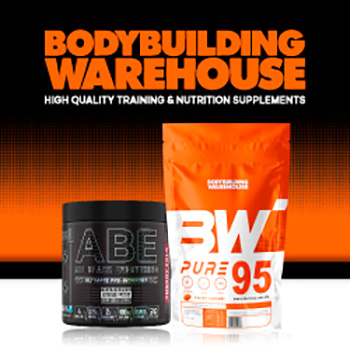
Key Takeaways
For those looking to efficiently boost their fitness levels, high intensity interval training can offer significant benefits.
- Stepping outside your fitness comfort zone triggers new muscle adaptations that aren’t possible with routine workouts
- Smart risk taking in exercise involves calculated progression, not reckless intensity
- Mental resilience gained from physical challenges translates to improved confidence in everyday life
- Plateaus are a natural sign that your body has fully adapted to your current workout routine
- JXT Fitness offers personalized guidance to help you safely push boundaries and maximize your fitness potential
Feeling stuck in your fitness journey? That comfortable routine you’ve been following might be the very thing holding you back. The human body is remarkably adaptive give it the same stimulus repeatedly, and it stops responding with progress. That’s not failure, it’s biology.
When was the last time your workout made you nervous? If you can’t remember, you’re likely trapped in a comfort zone that’s limiting your potential. At RenegadeFit, we’ve seen countless athletes break through stubborn plateaus by embracing calculated risks in their training approach. The transformations don’t just happen physically they reshape mind sets too.
Article at a Glance: Risk Your Comfort, Gain Your Strength
Your fitness journey is a constant dialogue between comfort and challenge. That burning sensation in your muscles, the momentary doubt before attempting a heavier weight, the vulnerability of trying a new movement pattern these are the conversations your body needs to have with resistance to evolve. Without these challenges, your progress stagnates while your potential remains untapped, waiting for you to take the leap.
Your Fitness Plateau Is Costing You Results
That frustrating plateau isn’t just costing you visible progress it’s robbing you of the biochemical environment needed for adaptation. When workouts become predictable, your body conserves energy rather than building new capacity. It’s simply following the principle of efficiency, why build more muscle or cardiovascular capacity when what you have is already sufficient? For more insights on breaking through barriers, consider stepping out of your comfort zone.
The longer you stay comfortable, the more dramatic the intervention needed to spark change again. Your body becomes increasingly resistant to small modifications, requiring bigger disruptions to trigger growth responses. This is why many experienced athletes find themselves needing to completely restructure their training after years of following the same patterns.
How Comfort Zones Sabotage Your Fitness Progress
Comfort zones aren’t just mental constructs they have physiological implications. Each time you exercise, your body analyses the demand and prepares to meet it more efficiently next time. This is called the SAID principle: Specific Adaptation to Imposed Demands. Initially, this works in your favour as you get stronger and more efficient.
However, after weeks of the same stimulus, your nervous system optimizes pathways, your muscles adapt their fibre composition, and your energy systems become precisely calibrated to the exact demands you’ve been placing on them. No additional adaptation is necessary, so progress halts.
Think of your comfort zone as a ceiling. You can move freely below it, but real growth happens when you push against it, forcing it higher. Every time you stay safely below that ceiling, you reinforce its current height.
The Science Behind Adaptation and Diminishing Returns
Your body’s response to exercise follows a predictable curve. Initial exposure to a stimulus creates dramatic adaptation that’s why beginners progress so quickly. As exposure continues, the rate of adaptation diminishes until it eventually flat lines. This physiological principle explains why that workout that left you sore and breathless three months ago now feels routine and produces minimal results.
5 Warning Signs You’re Trapped in a Workout Rut
You might be in a fitness rut if you notice these tell tale signs, workouts feel more like going through motions than challenges, you can predict exactly how many reps you’ll complete before fatigue, you haven’t felt genuinely sore in weeks, your metrics (weight lifted, distances, times) haven’t changed in over a month, or you find yourself checking the clock frequently during sessions. These indicators suggest your body has fully adapted to your current routine and is no longer receiving growth stimulus. It’s important to recognize these signs and consider stepping out of your comfort zone to reignite your progress.
The most dangerous part? This comfort can feel deceptively positive. You complete workouts without struggle, movements feel smooth, and recovery is minimal. But these “benefits” are actually symptoms of stagnation.
Why Your Brain Resists New Exercise Challenges
Your resistance to workout risks isn’t just laziness it’s your brain’s threat detection system at work. The amygdala, your brain’s fear centre, flags potential discomfort as a threat to be avoided. This evolutionary mechanism helped our ancestors conserve energy and avoid injury, but in the modern fitness context, it can become an obstacle to progress. For more insights on overcoming these mental barriers, check out these reasons to leave your comfort zone.
Additionally, the brain craves certainty and predictability. It prefers known outcomes over uncertain ones, even if the unknown possibilities include greater rewards. This cognitive bias toward familiarity keeps many people trapped in ineffective routines long after they’ve stopped producing results.
- Your brain releases stress hormones when facing new physical challenges
- Anticipation of discomfort activates the same neural pathways as actual pain
- The prefrontal cortex must override these protective instincts for you to push boundaries
- Repeated exposure to calculated fitness risks actually rewires these neural responses
- This neurological adaptation is why discomfort becomes more manageable over time
Understanding these psychological barriers is the first step to overcoming them. When you recognize that your reluctance is primarily neurological rather than physical, you can develop strategies to work with rather than against your brain’s protective mechanisms.
Smart Risk Taking: The Key to Breakthrough Gains
Taking fitness risks doesn’t mean attempting a 400-pound deadlift when your previous max was 200. Smart risk taking means systematically pushing boundaries with a calculated approach. The sweet spot for progress lies just beyond your current capabilities challenging enough to trigger adaptation but not so extreme that injury becomes likely.
This concept of “productive discomfort” separates elite performers from recreational exercisers. They’ve mastered the art of living in this challenging middle ground, where growth happens fastest. The key is learning to distinguish between productive strain and dangerous pain.
Safety First: How to Calculate Risk vs. Reward
Before taking any fitness risk, conduct a simple risk benefit analysis. Ask yourself, Does this challenge have a reasonable chance of success? Have I built the necessary foundation? Is the potential reward worth the potential setback? What safeguards can I implement? This thoughtful approach transforms impulsive risk into strategic progression.
Remember that risk assessment changes with experience. What constitutes risky for a beginner might be perfectly safe for an advanced athlete. The goal is to find your personal edge that point where challenge and capability meet and gradually push it further.
Progressive Overload: The Original Fitness Risk
The fundamental principle of strength training progressive overload is actually a form of controlled risk taking. Each time you add weight to the bar, increase repetitions, or extend time under tension, you’re venturing into uncertain territory. Your body responds to this uncertainty by building greater capacity as a safeguard against future challenges.
This biological insurance policy is the essence of all physical adaptation. Without the stress of that additional weight or intensity, your body has no reason to allocate precious resources to building new muscle tissue or enhancing metabolic pathways. Risk is literally the stimulus for growth.






